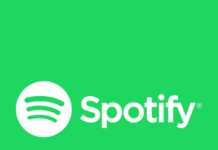
(Mike McVay) It’s not surprising that a company named Futuri would commission a research study to acquire insight into where media is going both from an audience and revenue viewpoint. The study from Futuri and research firm Smith Geiger Group offers a blueprint on how Radio can remain one of the receivers on which we hear Audio, despite all audio being referred to by the respondents as Radio, regardless of the platform.
The study includes responses from nearly 200 executives in radio, television, and digital publishing in regard to how their businesses have been impacted by the Coronavirus. It includes responses from 2,000 nationwide media users between the ages of 16-74. The study also included focus groups with more than 100 media users in America. The sample was balanced by age, gender, education, employment and income. I was impressed with the clarity of the study’s findings and concerned at the prospect of what broadcast media and digital publishers are faced with to show growth.
The white paper notes that “A substantial investment of time and resources will be required to claim the potential rewards.” Which validates what I’ve written previously that the “fix” won’t be easy for legacy media, but it’s necessary. Recently, I opined in one article that “we’ve not bled enough yet to take the painful steps necessary to improve our product and our service to clients.” It appears to me that many media outlets are focused on abdication versus focusing on a resurrection. The distribution that radio has is great, but it won’t be that way forever, unless we stem the erosion of the audience.
Looking at the study in two parts, the responses of those in media and the responses of those using media, provides an almost unanimous vote that something has to change. This is where the large sample size provides certain validity to the findings.
Media executives are concerned. Those responsible for revenue are concerned that they do not have the data-driven sales research and marketing pitches to position the uniqueness of their brands. They lack what they need to keep up with digital-first competitors. Content leaders are struggling with cost cutting that’s eliminating talent which erodes quality and market connectivity and the loss of quality due to over commercialization. Everyone is worried with their ability to keep up with emerging technologies. In the meantime, content remains in demand by a hungry audience.
The key takeaways, identified by Futuri CEO and Founder Daniel Anstandig, validates what most of us believe. Which is that the audience’s perception of media is changing and our perceptions don’t necessarily align with theirs. Social media is the greatest opportunity for content, audience and revenue growth. Investment in social media is the greatest opportunity for content, audience and revenue growth.
The research shows that Radio is the name used for all pureplay audio. It’s a term that’s applied to all audio. Meaning that regardless of hearing audio content over-the-air, streaming, satellite, on a smart speaker or any digitally delivered audio, and even if it’s not radio audio, but from a streaming service, people refer to it as Radio. Which screams that we shouldn’t be so focused as to what we call it, but focus on the content that’s being delivered.
Talent is a positive differentiator when it comes to audio channels. The focus has to be omnichannel. The talent has to be authentic. The content has to be well targeted. This study showed, from the focus groups, that the audience has high standards. They don’t want to hear rambling conversations that are of no interest to them. That makes sense. Listeners compare local talent to national talent. To the audience it’s a flat world. The concern is that at a time when talent is incredibly important, the industry is eliminating or devaluing them in some situations. Personalities are the one thing that a competitor cannot easily copy.
To that end, local content is key, which may seem like a “no brainer”, but it’s not unusual to hear personalities who are in a market focusing on national content and topics that may have little interest among the locals in the market. Talent need not be based in a market, but they need to relate to and connect to the market where the audience listens to them. The greater the connectivity, providing the content is interesting and well-focused, the greater the opportunity for success.
Social media, as a part of a show, has great value to the listener in regard to entertainment, information and the aforementioned connection to the market. This is particularly true in regard to the morning show. Posting interesting content, that was mentioned on your show, can serve as an igniter leading to a potential listener making a choice to start their day by listening to your station.
Our biggest competitor for share of attention, and in regard to usage, is social media. Especially Facebook. People get their news, weather, traffic, hear about new music, and are entertained with videos and pictures on social media. Social media is providing sought after content and creating an emotional lift for users. Content that is most sought after falls into the categories of Funny and Happy.
A finding that shouldn’t be surprising, but will catch some off-guard, is that there is a general decline of trust in large institutions. Major TV Networks are not excepted. Not one of the major networks (Fox, CNN, CBS, NBC, ABC, PDS, and Newsmax) commanded trust from half of the respondents. Not one. Younger Americans are the least trusting of the information that they receive from Major networks. Interestingly, this study notes that local Radio, local Television and local Newspapers are consider the most trustworthy of the media outlets. Radio, ranked as the highest, was still only trusted by 45% of the respondents. Facebook is used for news more than any other social or digital outlet.
When radio and television executives were asked about the Top-5 most important challenges that they’re facing today, they responded with 1) Keeping the advertisers you have, 2) Breaking through to new buyers/advertisers, 3) Keeping the audience that you have, 4) Keeping up with the pace of change and 5) Attracting and retaining younger audiences.
While the study points out, in some cases the obvious and in some cases surprises, it does conclude with the optimism that a far-sighted view of the media situation could lead to realization of the issues that plague us and curative actions could lead to a reversal of audience erosion and success. However, the world and media usage has changed, and with that change comes the need for changing to meet the audience where they are and satisfy them in a way that creates excitement and enthusiasm. Such enthusiasm needs to come from advertisers as well as listeners and it needs to start with action.
As I often comment to those naysay when a solution is offered, “what’s your solution?” We know that radio isn’t going to return to its glory days when there was little competition, but we also know that it’s a good business and that by becoming omnipresent on multiple platforms, we can attract an audience. We also know that to do so we have to improve the listening experience and we have to return to a sales strategy that sells product, services, merchandise and experiences instead of “spots and dots” if we’re to compete with other more targeted media.
The report from Futuri and Smith Geiger concludes by asking nine cognitive questions that could be, and should be, the fodder for a discussion in radio and television conference rooms across North America.
- How do you create content for so many different channels?
- Where do you distribute your content?
- How can you address the audiences desire for control and personalization?
- How do you leverage talent as a differentiator, focusing on authenticity and personal connection?
- How do you expand the news brand to multiple channels without compromising quality or credibility?
- How do you leverage the trust your audience has in you as a strength across all channels?
- How do you take advantage of the growth of sports, eSports and betting as content, audience and revenue growth opportunities?
- How do you use data-driven marketing and sales research as an opportunity?
- What’s the best way for your brand to leverage consumers growing willingness to pay for quality content?
I will add a 10th question that needs to be asked; 10) How can you lower your commercial load, without fear of massive revenue loss, in an effort to improve the listening experience?
You can register for the white paper from Futuri/Smith Geiger, as well as for the October 12th formal web presentation by Futuri’s Daniel Anstandig, at https://futurimedia.com/study21.
Mike McVay is President of McVay Media and can be reached at [email protected]








Gosh this is very deep to say the least, Mike. You hit on some very important points -but it would seem the most important is an adjustment of the 10th question. “How do you improve the listening experience?”.
The listener doesn’t care about your revenue, your overhead or your budget. All they want is something that’s easy to receive and entertains. That was the beauty of radio then, and is now. The trouble is MY entertainment today is probably different from yours. Broadcasters have typically researched the common denominator and addressed that, and even the narrowcasting (i.e. different “formats”) still reach for a common denominator.
It’s a simple solution that’s been made unbelievably complicated by the need for “more revenue”, “lower expenses” and a focus on stellar wall street performance (that still has yet to be).
What we know as radio has two main advantages over the streamers. It’s still easy to get and still free. If those other technologies catch up before the current product gets fixed, the rest of the conversations (in my opinion) are moot.
Dave,
Mike always makes great points and I love some of what you said as well. I just wanted to perhaps give you the reality Coming from the other side of this…(a Morning show with exp. in Top 5 markets who took a chance went to a smaller place to build something did and BAM Covid) We are a show and have literally interviews weekly for Great JOBS, we talk about multi tier content. We talk about how videos work best on FB while TW is more male and sports dominated, we talk about what comes out of the speakers is so important but it’s important because you need to get these ppl to get to your other platforms and create other revenue streams (something we are good at) BUT, nobody wants to try something. Everyone is waiting for someone else to do it. Radio can’t play defense when it’s on Offense. I’ve explained this many times and it freaks people out. Mike had an article last week that was a precursor to this one, yet ONLY ONE person that I reached out to thought enough about it to talk and consider it. We say we want this but in my experience many managers DONT want to be the first ones…. That’s what is going to kill this biz. As an example, aside from a great show. We have Hot Tub Talk, podcasts, videos, current event discussions time appointment setting benchmarks and supplemental content for each platform…. It’s too much for people. We have something going we shall see but it’s been a year of average and safe moves… and it doesn’t look like it will stop!!!
PS. When I say too much for people I meant the one hiring not the average listener.